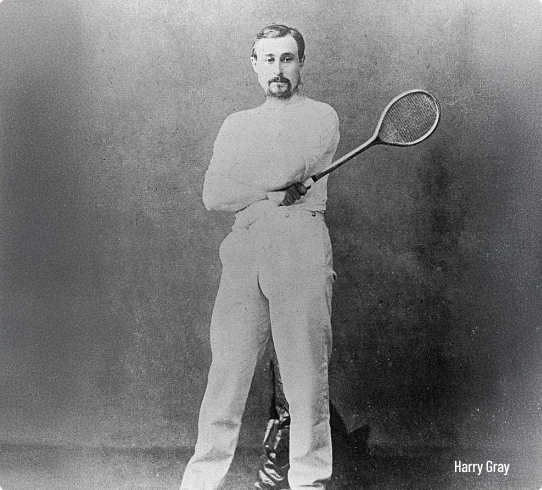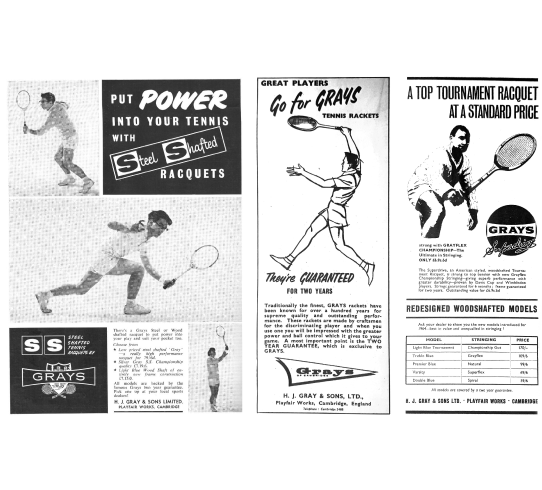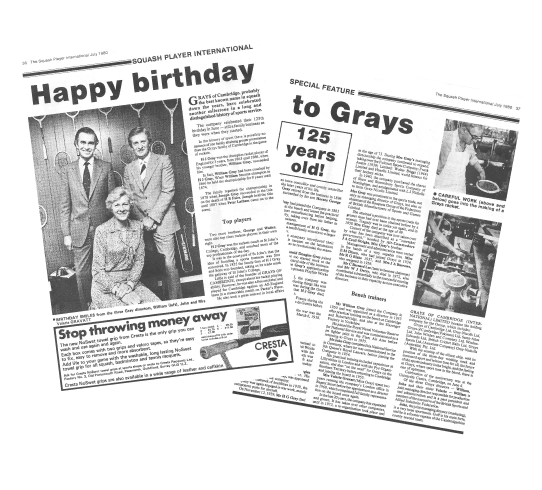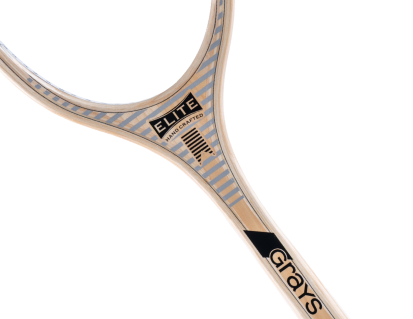World rackets champion Harry Gray was one an illustrious Victorian sporting family of 5 brothers who were all rackets professionals (the predecessor to squash). 3 went on to become world champions. Harry began making and selling rackets balls and stringing racquets and established Grays in Cambridge, England in 1858. The factory continues to hand-craft wooden racquets for Real Tennis, Rackets and Lawn Tennis in Cambridge.
The company grew rapidly and became well known at the University for the manufacture of top quality frames for all racquets sports. In those days, squash racquets were made from 1 piece English ash with a suede leather grip and natural gut, costing 12 shillings and sixpence.
By the turn of the century, Harry’s son, Horace Gray took over the business. The Grays brand grew nationally as famous players such as Max Woosnam, England’s Davis Cup Captain using Grays racquets and the future King George V and VI both Grays customers whilst at Cambridge University. Charles Williams was the World Champion playing in America at the time and lost his Grays racquets on the Titanic. Grays moved to larger premises in Benson Street, Cambridge to accommodate the increasing production and developed the first ever laminated racquet – the Masterpiece – which allowed a better shape and was more durable.









